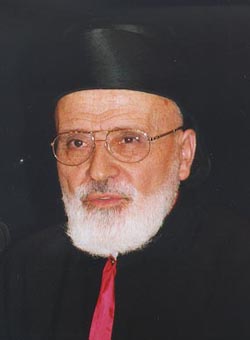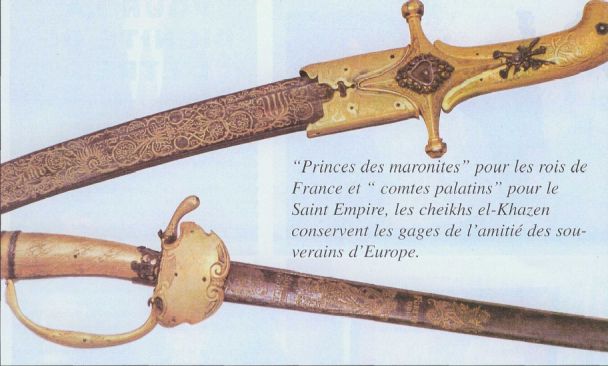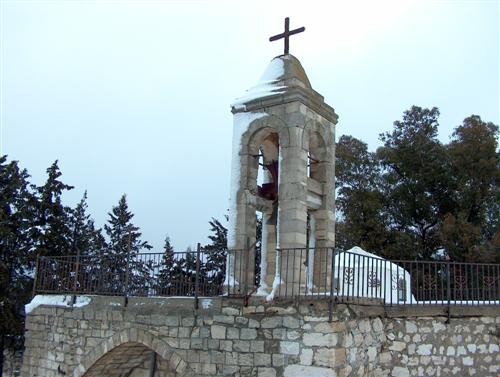 13 February 2008 BEIRUT - A Hezbollah official said on Wednesday that one of it's top commanders, Imad Mughnieh, had been killed in Syria and blamed Israel for the attack. The official said Mughnieh was killed in a car bombing in the Syrian capital late on Tuesday.
13 February 2008 BEIRUT - A Hezbollah official said on Wednesday that one of it's top commanders, Imad Mughnieh, had been killed in Syria and blamed Israel for the attack. The official said Mughnieh was killed in a car bombing in the Syrian capital late on Tuesday.
But the bars and clubs are slowly being strangled by the ongoing political crisis. This city used to be the unambiguous "party capital of the Middle East". Now a chorus of depression seems to be drowning out Beirut's famous hedonistic vibe. Mohammed Chehab - a regular in Monot Street's once-teeming RAI club - said: "Before, it was very good. The nightlife was on fire! "Now, because of the unstable situation in Lebanon, people are afraid to come out. They are scared of explosions." 'Nothing left' Monot Street, a narrow avenue which snakes down to the centre of town, had an international reputation among clubbers in its heyday. At night, it was virtually impossible to drive through the crowds of party-goers and the rows of gleaming BMW and Mercedes cars. There were about 100 bars and clubs in the area. Now, locals say the number is down to about 50. "Half of the business has gone," laments Mazin Moughrabi, a manager at one of the clubs. "I will finish my studies and travel abroad. There is nothing left for me in Lebanon."  By Mike Sergeant, BBC, Beirut's legendary nightlife has survived wars, invasions and assassinations.
By Mike Sergeant, BBC, Beirut's legendary nightlife has survived wars, invasions and assassinations.
"This means that the ratio of the nonpoor in Lebanon is at 71.5 percent. This level compares well to that prevailing around 10 years ago in 1997, as national accounts statistics suggest that the growth in real per-capita private consumption was at a notable average of 2.75 percent annually, since 1997," said the study, which was published by Bank Audi's Lebanon Weekly Monitor on Tuesday. But the IPC stressed that the distribution of this growth in consumption across different regions within Lebanon was again uneven. "It was the highest in Beirut, at around 5 percent annually, which is not surprising, considering the widespread investment and job creation that took place in the capital after 1997. Also, a higher-than-average growth rate was observed in the South and Bekaa, as it reached 4 percent annually. On the other hand, Mount Lebanon and the North saw trivial growth in consumption, which translated into a relative decline in their mean per-capita expenditure compared to the overall average," the IPC said.  Report notes regional disparities, BEIRUT: An international study estimates that the poverty ratio in Lebanon is around 28.5 of the population, accounting for almost a million Lebanese, with 8 percent of the population, or almost 300,000 individuals, living under conditions of extreme poverty. These figures were disclosed by the International Poverty Center (IPC), an institute jointly supported by the Brazilian Institute for Applied Economic Research (IPEA) and the Bureau for Development Policy at the United Nations Development Program
Report notes regional disparities, BEIRUT: An international study estimates that the poverty ratio in Lebanon is around 28.5 of the population, accounting for almost a million Lebanese, with 8 percent of the population, or almost 300,000 individuals, living under conditions of extreme poverty. These figures were disclosed by the International Poverty Center (IPC), an institute jointly supported by the Brazilian Institute for Applied Economic Research (IPEA) and the Bureau for Development Policy at the United Nations Development Program
 BKIRKI: Maronite Patriarch Nasrallah Butros Sfeir said Tuesday a new president should be elected "as soon as possible," reiterating his support for the head of the Lebanese Armed Forces, General Michel Suleiman. "We support Suleiman because the country needs a president who is for all the Lebanese and who does not distinguish between one party and another," Sfeir said. "The Lebanese are now divided, some are with the East and some with the West," the patriarch added, urging them to be only Lebanese.
BKIRKI: Maronite Patriarch Nasrallah Butros Sfeir said Tuesday a new president should be elected "as soon as possible," reiterating his support for the head of the Lebanese Armed Forces, General Michel Suleiman. "We support Suleiman because the country needs a president who is for all the Lebanese and who does not distinguish between one party and another," Sfeir said. "The Lebanese are now divided, some are with the East and some with the West," the patriarch added, urging them to be only Lebanese.
"We are the ones responsible for our country. We have to stand united in order to preserve our country's past, present and future," he said. MP Robert Ghanem said after meeting Sfeir: "We hope to put an end to the presidential election because the latter constitute the starting point to ending all other problems." Grand Mufti Sheikh Mohammad Rashid Qabbani called on the Lebanese on Tuesday to participate "massively" in Thursday's rally to commemorate the third anniversary of former Premier Rafik Hariri's killing.
Khazen History


Historical Feature:
Churches and Monasteries of the Khazen family

St. Anthony of Padua Church in Ballouneh
Mar Abda Church in Bakaatit Kanaan
Saint Michael Church in Bkaatouta
Saint Therese Church in Qolayaat
Saint Simeon Stylites (مار سمعان العامودي) Church In Ajaltoun
Virgin Mary Church (سيدة المعونات) in Sheilé
Assumption of Mary Church in Ballouneh
1 - The sword of the Maronite Prince
2 - LES KHAZEN CONSULS DE FRANCE
3 - LES MARONITES & LES KHAZEN
4 - LES MAAN & LES KHAZEN
5 - ORIGINE DE LA FAMILLE
Population Movements to Keserwan - The Khazens and The Maans
ما جاء عن الثورة في المقاطعة الكسروانية
ثورة أهالي كسروان على المشايخ الخوازنة وأسبابها
Origins of the "Prince of Maronite" Title
Growing diversity: the Khazin sheiks and the clergy in the first decades of the 18th century
Historical Members:
Barbar Beik El Khazen [English]
Patriach Toubia Kaiss El Khazen(Biography & Life Part1 Part2) (Arabic)
Patriach Youssef Dargham El Khazen (Cont'd)
Cheikh Bishara Jafal El Khazen
Patriarch Youssef Raji El Khazen
The Martyrs Cheikh Philippe & Cheikh Farid El Khazen
Cheikh Nawfal El Khazen (Consul De France)
Cheikh Hossun El Khazen (Consul De France)
Cheikh Abou-Nawfal El Khazen (Consul De France)
Cheikh Francis Abee Nader & his son Yousef
Cheikh Abou-Kanso El Khazen (Consul De France)
Cheikh Abou Nader El Khazen
Cheikh Chafic El Khazen
Cheikh Keserwan El Khazen
Cheikh Serhal El Khazen [English]
Cheikh Rafiq El Khazen [English]
Cheikh Hanna El Khazen
Cheikha Arzi El Khazen
Marie El Khazen